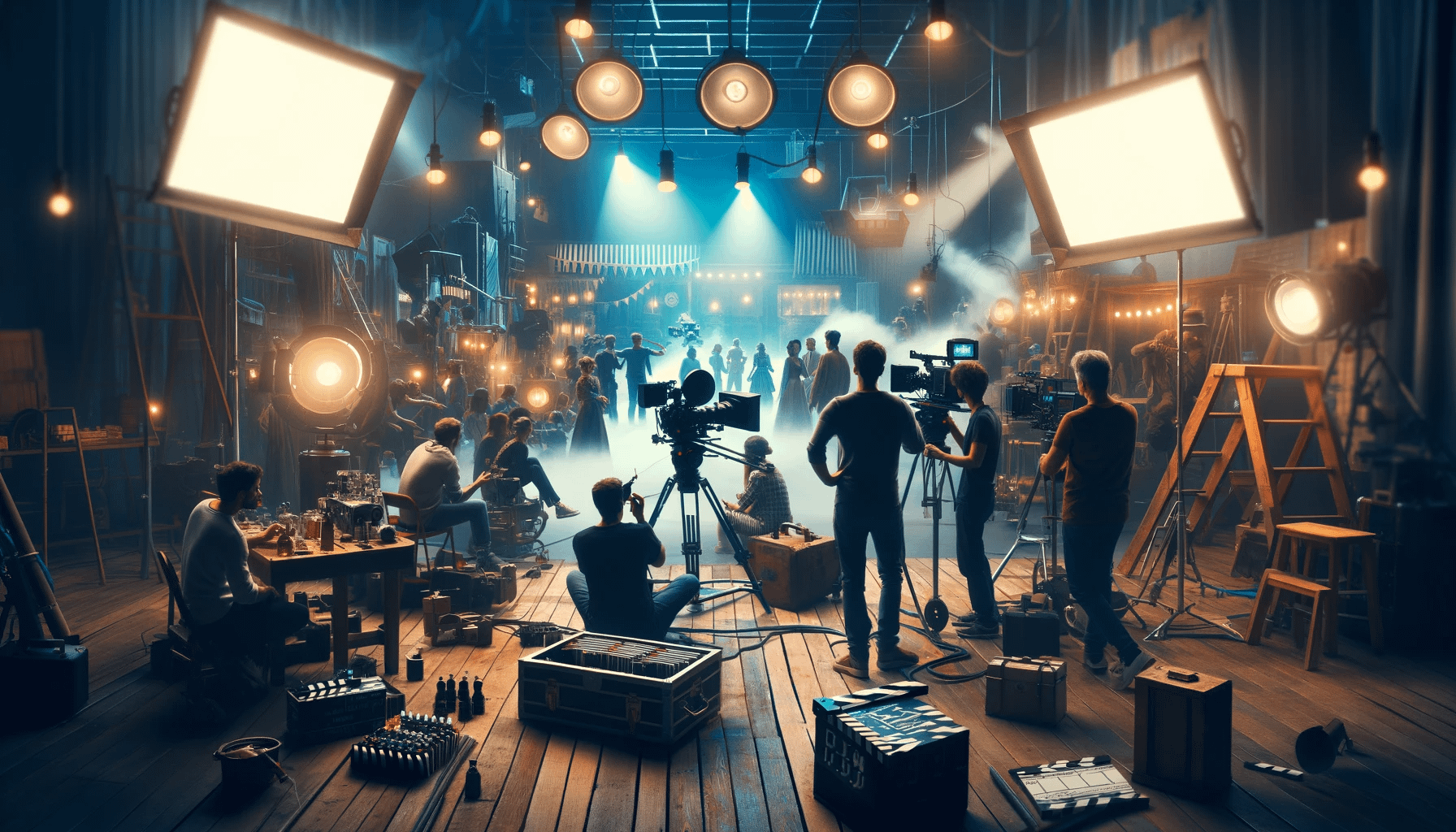
07PRO – Shoot Day: 1st Unit
- by garciaone
- in Principle Photography
- posted January 10, 2024
Filming
When your shot is being set up you will invariably be doing many things at once. This can be stressful no doubt about it. As always, communication is key. Everyone from the Director, the 1st AD, DOP to stunt doubles, may be asking you for your input into the shot. For much of the crew they only have a vague idea of the shot?s intention and method of execution, and therefore it?s your job to help bring them into the fold. Chances are you are the only person that really knows how it?s all going to come together in the end.
Things that may come up could be:
The correct placement for tracking markers as seen through the camera monitors
Where should the camera operator be holding focus
Helping that dolly grip with timings for a specific camera action
Directing an actor as to where their eyeline should be
These are just a few examples but during a shot setup all of these questions and more can and will be posed to you at once. Stay calm.
Once the shot is setup, it?s good to be close to the Director. Perhaps it?s a rehearsal or an actual take but you need to be able to easily provide any feedback or field any questions regarding the shot. This is especially important when filming for animation or any performance driven work. If the timing of a shot is off you should be ready to help the Director and actors hone in on the performance. As well, upon playback you should be looking for anything that can help or hurt the shot as well as your VFX team?s execution of the shot in post.
Did your plan work?
If not, how can you quickly make adjustments that will get the shot?
Are the tracking markers going behind the actress?s hair?
Can you even see any tracking markers?
Is the blocking working at real speed?
Is there something missing in the shot or something in there that shouldn?t even be there?
Ultimately, you need to be the eyes for the execution of the shot as both a filmmaker and VFX artist, and do it on the fly.
Eventually everything works out. The Director gets the shot, the stunt man isn?t hurt, the producers are thrilled and everyone is ready to move on. Everyone except VFX. Don?t let the 1st AD release the crew, break the camera or move on until you get what you need so speak up. People move fast and VFX reference can easily be forgotten by a film crew with a time crunch. Getting the reference needs to be well orchestrated and swift. Have your gear close by and be ready for action. For every shot you should have already communicated your intentions for reference gathering. It is during the filming of the takes that you should refine what you need. If something comes and you have a revelation about some ref you need, you need to immediately whisper in the 1st AD?s ear that the plan has changed.
Perhaps you need to tile the background for a post move later? In that case, get ready to direct the camera operator.
Do you need that HDRI or chrome ball reference (by default the answer is yes) but by chance the lighting hasn?t changed and you have the HDRI from a previous setup that will work. In that case, take this opportunity to give back some good will in the form of time. Let the 1st AD know.
In short, get your reference, get exactly and only what you need and when you are done let the AD know so they can release the crew to the next shot.
End of the Day ? Wrap
If a film isn?t VFX centric there is a very good likelihood that your shots will come up last. It probably has something to do (understandably) with getting the most out of the time with the actors. Also, everybody knows just how good you are and that you can fix just about anything in post. This doesn?t always seem fair but just know it happens and you may be sitting around from 6:30 am until 5pm to get your shots. To that end, be ready when the time comes as there can be a fair amount of pressure to get everything wrapped on schedule due to crew turnaround then following day.
To plan accordingly it?s advisable to get as much reference (measurements, photographic reference) as possible during the down time so when your shots are done, the 1st AD can release the crew. Also to be aware of, if the final shots of the day are VFX heavy the Director may be taking the time to discuss the next days business with department heads while you are working to get your shots. While you can?t be in two places at once, it?s good to follow up with the 1st AD or other to find out what was said.
Lastly, before you leave make sure to get a call sheet for the following day. If it?s the last day or a one day shoot take the time to thank those that helped you. If you?re lucky you will see them again.
Units
Main Unit : This is the film unit that will shoot the primary talent. On Main Unit you will find the Principal Actors, Director, DP and department heads of the film.
Second Unit : Second Unit is actually where all the fun is. By comparison, shooting Second Unit is a much more relaxed environment. Second Unit has their own entire crew from Second Unit Directors to Grips. On Second Unit you film inserts, action sequences including many stunts, and a lot of Visual Effects driven shots.
